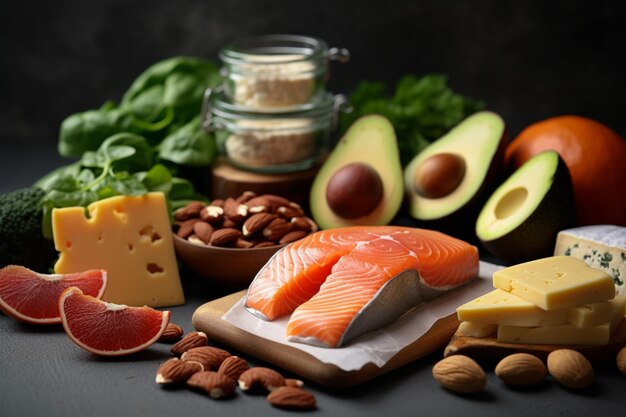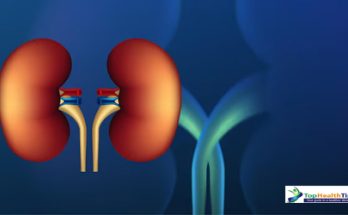Type 2 diabetes is a chronic condition where the body either doesn’t produce enough insulin or becomes resistant to its effects, leading to elevated blood sugar levels. While medication can help manage this condition, diet plays a crucial role in controlling blood sugar and improving overall health.
This guide provides actionable dietary strategies to help manage Type 2 diabetes, supported by scientific evidence.
Understanding Type 2 Diabetes and Diet
How Insulin Works:
- Normal Function: Insulin helps cells absorb glucose (sugar) from the bloodstream to use for energy or store for later use.
- In Type 2 Diabetes: The body becomes resistant to insulin, meaning glucose builds up in the bloodstream, leading to high blood sugar levels, also known as hyperglycemia.
Diet’s Role:
- Balancing Blood Sugar: The food you eat directly affects blood glucose levels. By choosing the right foods and meal timing, you can stabilize these levels and reduce insulin resistance.
- Preventing Complications: A healthy diet helps prevent complications like heart disease, kidney issues, and nerve damage.
Key Dietary Strategies to Control Type 2 Diabetes

1. Focus on Low Glycemic Index (GI) Foods
The Glycemic Index (GI) ranks foods based on how they affect blood sugar levels. Foods with a low GI are digested slowly, leading to gradual blood sugar changes.
- Low-GI Foods:
- Non-starchy vegetables (broccoli, spinach)
- Whole grains (quinoa, barley)
- Legumes (lentils, chickpeas)
- Fruits like apples, pears, and berries
- High-GI Foods to Limit:
- White bread, sugary cereals
- Instant rice
- Potatoes
- Sugary beverages
Mechanism: Low-GI foods help to prevent rapid spikes in blood glucose, which is essential for controlling Type 2 diabetes.
2. Prioritize Fiber-Rich Foods
Fiber, particularly soluble fiber, helps slow the absorption of sugar into the bloodstream, reducing blood glucose levels.
- High-Fiber Foods:
- Vegetables (carrots, Brussels sprouts)
- Fruits (berries, apples with skin)
- Whole grains (oats, brown rice)
- Beans and legumes
- Daily Recommendation: Aim for at least 25-30 grams of fiber daily.
Mechanism: Fiber slows down the digestion process, minimizing post-meal blood sugar spikes and promoting insulin sensitivity.
3. Embrace Lean Proteins
Protein has a minimal impact on blood sugar levels and can help you feel full, reducing the temptation to overeat or snack on high-carbohydrate foods.
- Best Sources of Lean Protein:
- Skinless poultry (chicken, turkey)
- Fish (especially fatty fish like salmon)
- Eggs
- Plant-based proteins (tofu, lentils)
- Avoid: Processed meats (bacon, sausages) as they contain high levels of unhealthy fats and preservatives.

4. Choose Healthy Fats
Not all fats are bad! Healthy fats can improve heart health, which is crucial for people with diabetes, and help with long-term weight management.
- Good Fats:
- Monounsaturated fats: Olive oil, avocado
- Polyunsaturated fats: Omega-3 fatty acids in fish like salmon, chia seeds, and flaxseeds
- Limit:
- Trans fats (found in fried and processed foods)
- Saturated fats (red meat, butter)
Mechanism: Healthy fats enhance cell function and can reduce inflammation, contributing to improved insulin sensitivity.
5. Stay Hydrated
Drinking water regularly helps maintain blood glucose balance and prevents dehydration, which can lead to elevated blood sugar levels.
- Best Choices:
- Water
- Unsweetened herbal teas
- Seltzer or sparkling water without added sugar
- Limit:
- Sugary drinks (sodas, energy drinks)
- Fruit juices (high in sugar, low in fiber)
6. Practice Portion Control
Overeating, even healthy foods, can lead to weight gain and worsen insulin resistance. Monitoring portion sizes can prevent spikes in blood sugar.
- Portion Control Tips:
- Use smaller plates
- Measure portions with your hands (e.g., a fist-sized portion for carbs)
- Eat slowly and stop when you’re 80% full
Mechanism: Smaller portions help to regulate calorie intake, aiding weight management and reducing strain on insulin production.
Sample Day of Meals for Type 2 Diabetes Management
Breakfast:
- Steel-cut oats with chia seeds, berries, and almond milk
Lunch:
- Grilled chicken salad with leafy greens, avocado, cherry tomatoes, and a vinaigrette dressing
Snack:
- Handful of almonds or carrot sticks with hummus
Dinner:
- Baked salmon with quinoa and steamed broccoli
Dessert:
- Greek yogurt with a sprinkle of flaxseeds
Foods to Avoid in a Diabetes-Friendly Diet
While many foods are beneficial, some should be limited or avoided:
- Sugary Beverages: Sugary drinks like soda and sweetened coffee cause blood sugar spikes.
- Refined Carbohydrates: White bread, pastries, and processed snacks lead to rapid glucose increases.
- Fried and Processed Foods: These foods are high in unhealthy fats and contribute to insulin resistance.
The Role of Weight Loss in Managing Diabetes
Mechanism: Losing 5-10% of your body weight can significantly improve insulin sensitivity. A healthy diet combined with regular exercise supports sustainable weight loss, helping to stabilize blood glucose.
- Effective Strategies:
- Calorie deficit through portion control
- Regular physical activity (30 minutes of walking daily)
- Reducing refined carbs and sugary foods

Interactive Tools for Diabetes Management
- Blood Sugar Trackers: Use mobile apps or online tools to log daily blood sugar readings.
- Calorie Counters: Apps like MyFitnessPal or Lose It! can help monitor portion sizes and food intake.
- Meal Planning Tools: Websites that offer customizable meal plans based on your dietary needs.
Conclusion:
Controlling Type 2 diabetes through diet is not about strict restrictions but making thoughtful food choices. By focusing on low-GI foods, fiber-rich meals, lean proteins, healthy fats, and portion control, you can better manage your blood sugar levels, reduce insulin resistance, and improve your overall health.
By following these dietary guidelines, managing Type 2 diabetes becomes a more accessible and sustainable process. Your diet can be a powerful tool in maintaining healthy blood sugar levels.
Related post for Disease & Remedy>>>
References:
- American Diabetes Association. Standards of Medical Care in Diabetes—2023.
- Harvard School of Public Health. The Nutrition Source: Carbohydrates and Blood Sugar.
- Mayo Clinic. Type 2 Diabetes: How Lifestyle Changes Can Help.
- National Institutes of Health (NIH). Glycemic Index and Glycemic Load in Diet.
- World Health Organization (WHO). Healthy Diet.
By following these dietary guidelines, managing Type 2 diabetes becomes a more accessible and sustainable process. Your diet can be a powerful tool in maintaining healthy blood sugar levels.




